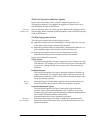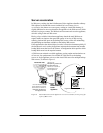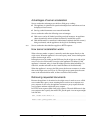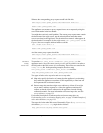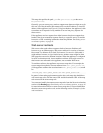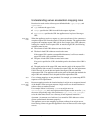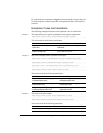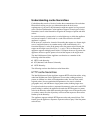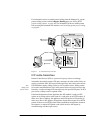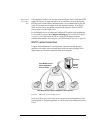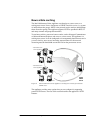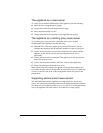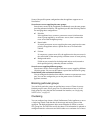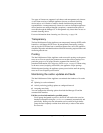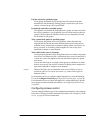
Appendix A Caching Solutions and Performance 135
Understanding cache hierarchies
Cache hierarchies consist of levels of caches that communicate with each other.
Hierarchical caching can give you information about the local access
requirements of your users; this information might not appear in a large central
cache. The Intel NetStructure Cache Appliance supports several types of cache
hierarchies, but all cache hierarchies recognize the concepts of parent and child
caches.
In a cache hierarchy a parent cache is a cache higher up, to which the appliance
can forward requests. A child cache is a cache lower down for which the
appliance is a parent.
In the event of a cache miss, instead of forwarding the request to a distant origin
server, it might be faster to try another nearby cache in the hierarchy. If a
forwarded request is a miss on the parent cache, the parent cache forwards the
request to the origin server. See Figure 7‚ on page 136 for an illustration. The
appliance supports multiple parent caches; if a request misses on all parents, the
appliance chooses a specific parent to forward the request to the origin server.
The Intel NetStructure Cache Appliance can function as a member of the
following cache hierarchies:
✔ HTTP cache hierarchy
✔ ICP (Internet Cache Protocol) hierarchy
✔ NNTP hierarchy
The following sections describe these cache hierarchies.
HTTP cache hierarchies
The Intel NetStructure Cache Appliance supports HTTP cache hierarchies, using
other Intel NetStructure Cache Appliances or even other caching products as
parents or children in a chain of interdependent caches.You can create small,
regional caches (for an organizational department or for users in a defined
geographic area), and link them to larger parent caches, defining larger areas.
If a regional cache does not have a requested document (a cache miss) and HTTP
parent caching is enabled, the appliance forwards the HTTP request to a parent
cache in the hierarchy rather than contacting the origin server. If the parent cache
(or caches) cannot serve the object they can forward the request to other caches
further up in the hierarchy.
The appliance supports multiple HTTP parent caches and parent failover. This
feature gives the appliance a sequence of parent caches to query if the first parent
cache misses.



